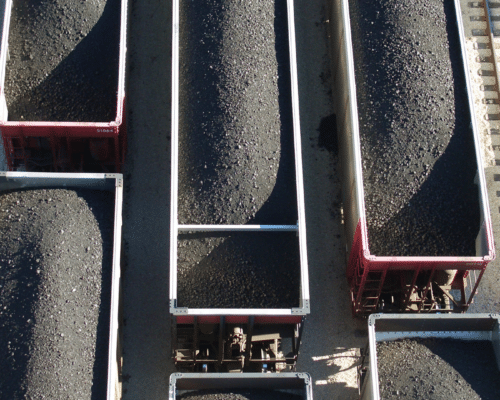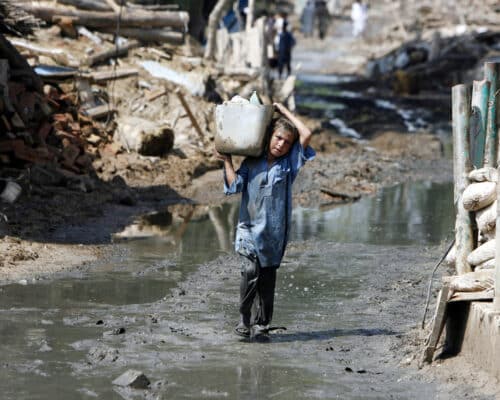COP26: The Glasgow Climate Pact Has Been Adopted
COP26
15 November 2021 – by UN Climate Summit Comments (0)
Analysis
This Glasgow Climate Pact at COP26 has, to an extent, reflected the findings of the IPCC SR1.5 and IEA net zero report, mandating an acceleration in action and new plans by 2022 in the context of the voluntary, non binding UN regime.
All major emitters will be compelled to return in 12 months and explain at the UN how their economy-wide policies and plans are aligned to the Paris temperature goals.
While the unprecedented fossil fuels phase out pledge was weakened by a last minute deal between China (the world’s largest fossil fuel consumer), the US (the world’s largest fossil-fuel producer), the EU and India, it is still there. Despite the watering down from “phase-out” to “phase down”, the cause of the climate crisis has for the first time since the Kyoto Protocol been called out by the 198 signatories of the Paris Agreement.
The change in language was condemned by small island states, Switzerland, Mexico and – ironically – the EU, which decided to support the shift despite slamming it as a “bad economic choice.”
But despite progress on future emissions reductions, COP26 failed those most impacted by the climate crisis now. The EU and US refused to create a fund that the poorest countries could draw on for crisis response – outraging small islands and many climate-vulnerable nations.
As with the COVID pandemic, global solidarity to save lives has not been on display in Glasgow.
The test of COP26 will be delivery: the next 18 months are crucial in determining whether countries take action aligned to 1.5C – that means cutting emissions by 45% by 2030.
Where Progress Was Made
Closing the Paris rulebook means that by 2024 all countries will have to report detailed data on emissions forming the baseline from which future reductions can be assessed.
Agreement on new carbon market rules closes down some of the outrageous loopholes that had been considered and creates a structured trading regime between countries, but language isn’t clear enough to stop companies gaming the system.
Agreement on 2025 as the date by when developed countries need to double their collective funds for adaptation, based on 2019 pledges. This won’t provide the necessary billions for adaptation finance that poorer countries need, but is a major improvement on the state of climate finance: only about a quarter of climate finance currently goes to adaptation, with the majority still being on mitigation.
Sector specific agreements on forests, coal, cars, methane and a $24bn agreement to stop overseas fossil fuel finance have the potential to make significant inroads into cutting emissions, but will require translation from national governments into policies and plans that have to be presented to COP in Egypt next year.
The banks and investors announcements in week one were large in numbers but devoid of substance. But the major banks have now committed to align their money to net zero in the 2020s and will face scrutiny on how they deliver on their green claims and shed fossil-fuel and other high-carbon assets.
In response to fears of greenwashing from corporates, a new expert group to assess corporate net zero claims announced by the UN Secretary General Antonio Guterres will have its work cut out. A key issue will be whether those plans drive emissions reductions, not a spoke in offsets.
Despite COVID and high costs preventing the participation of many civil society and activist groups, we still saw diverse groups come together at this COP all echoing a strong wave of support for climate action. On Saturday 6 November, over 100,000 people took to the streets in Glasgow, in one of the biggest demonstrations the city has ever seen, with indigenous groups, frontline health professionals, youth, trade unions, farm workers, and racial justice groups joining on the day.
What Was Not Delivered
-Developing countries wanted a clear plan for a loss and damage funding facility. This did not happen and focus will shift to Egypt next year to deliver this. African nations spend up to 10% of GDP a year on adaptation while impacts could deliver a 20% hit to GDP in poor nations by 2050 say Christian Aid.
Cover Text Specifics:
https://unfccc.int/documents
◾️ Developed countries double collective adaptation finance from 2019 levels by 2025
◾️ New UN work programme to scale up GHG cuts, reporting at COP27 in 2022
◾️ Urges’ [strong language] countries who have not landed new plans to do so by 2022
◾️ Requests all countries to raise climate targets in line with 1.5-2C by and of 2022
◾️ Commissions annual UN assessment of climate plans from 2022
◾️ Signal to countries to accelerate shift off fossil fuels, coal to renewable energy
◾️ Notes “deep regret” of developed countries for missing $100bn target
◾️ Urges countries’ to ‘fully deliver on the $100 billion goal ‘urgently’ through 2025
◾️ Welcomes the further operationalization of the Santiago network
◾️ Santiago network will be provided with funds to support technical assistance
◾️ Urges countries to provide funds to the Santiago network
◾️ Paris rulebook – what happened
◾️ Carbon markets – Article 6
The text has closed some of the outrageous loopholes, but it is not tight enough to stop companies and countries from using carbon credits as an easy way to continue polluting. And vitally, the levy on some of these transactions going to help fund the poorest countries adapt to climate change was removed. Negotiators have been trying to sign this deal for years, but the one that has been agreed at COP26 is a compromise that doesn’t fully pass the test of integrity.
Transparency
The new rules represent a new era in scrutiny on government climate pledges and will ensure that by 2024 everyone can assess what other countries are doing. It means a central element of the Paris Agreement will be up and running by the mid 2020s, and we should now have more regular and more robust information on the state of GHG emissions and progress made towards implementing NDCs.
Proposals that some Parties would not all use the same tables and formats for reporting are no longer included in the text. The text includes references to support for developing country Parties, and maintains the deadline for the submission of the first biennial transparency reports under the Paris Agreement by 2024.
Timelines
Agreed rules mean all countries should deliver climate plans to the UN on 5-year cycles, although analysts point to the use of the word ‘encouraged’ to use a common time frame for NDCs starting 2025 (with countries submitting 2035 NDCs in 2025, 2040 NDCs in 2030, etc). This “encouraged” language is weaker than before.
What Else Was Agreed
Boris Johnson set out as a measure for success for this COP action on coal, cars, cash and trees. There was a tsunami of deals delivered during COP, but the good have to be separated from the bad and the ugly: find an assessment of all the main deals here.
Climate Action Tracker found that the methane, coal, forests and transport deals contain additional action which would close the emissions gap to a 1.5C path by 9% or 2.2 GtCO2e.
The deals come into a transition which is sufficiently under way that there is no longer a meaningful case for investing in new carbon-heavy infrastructure, according to think tank Systemiq in a report released during COP. All major sectors are capable of developing cost-competitive green solutions by 2030, meaning the business case for any high-carbon infrastructure built today should be seriously questioned.
For sectoral action to help close the gap to the 1.5C threshold in time, governments will need to deploy supportive policies and the signatories to these deals will need to be held to account to come good on their promises.
_________________________________________________________________________________________________________________________________________________________________________
unclimatesummit.org is developed by: Periodistas por el Planeta, ClimaInfo, CarbonCopy and İklim Haber





